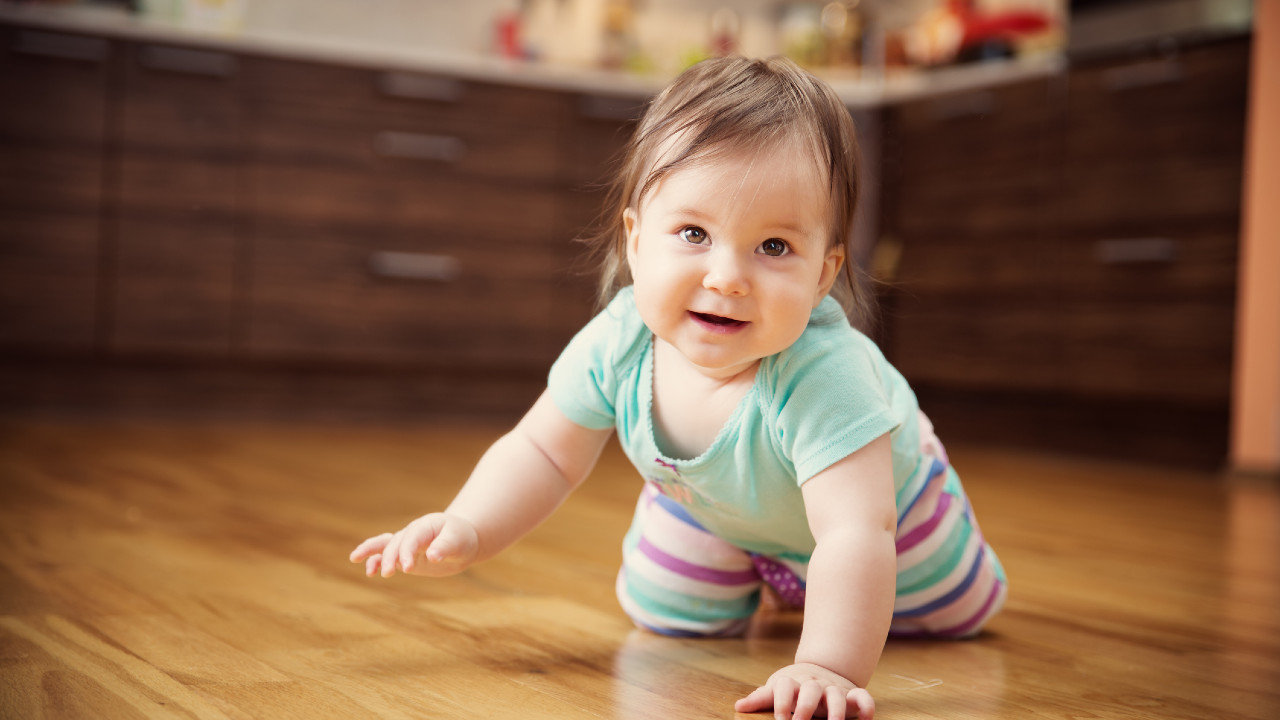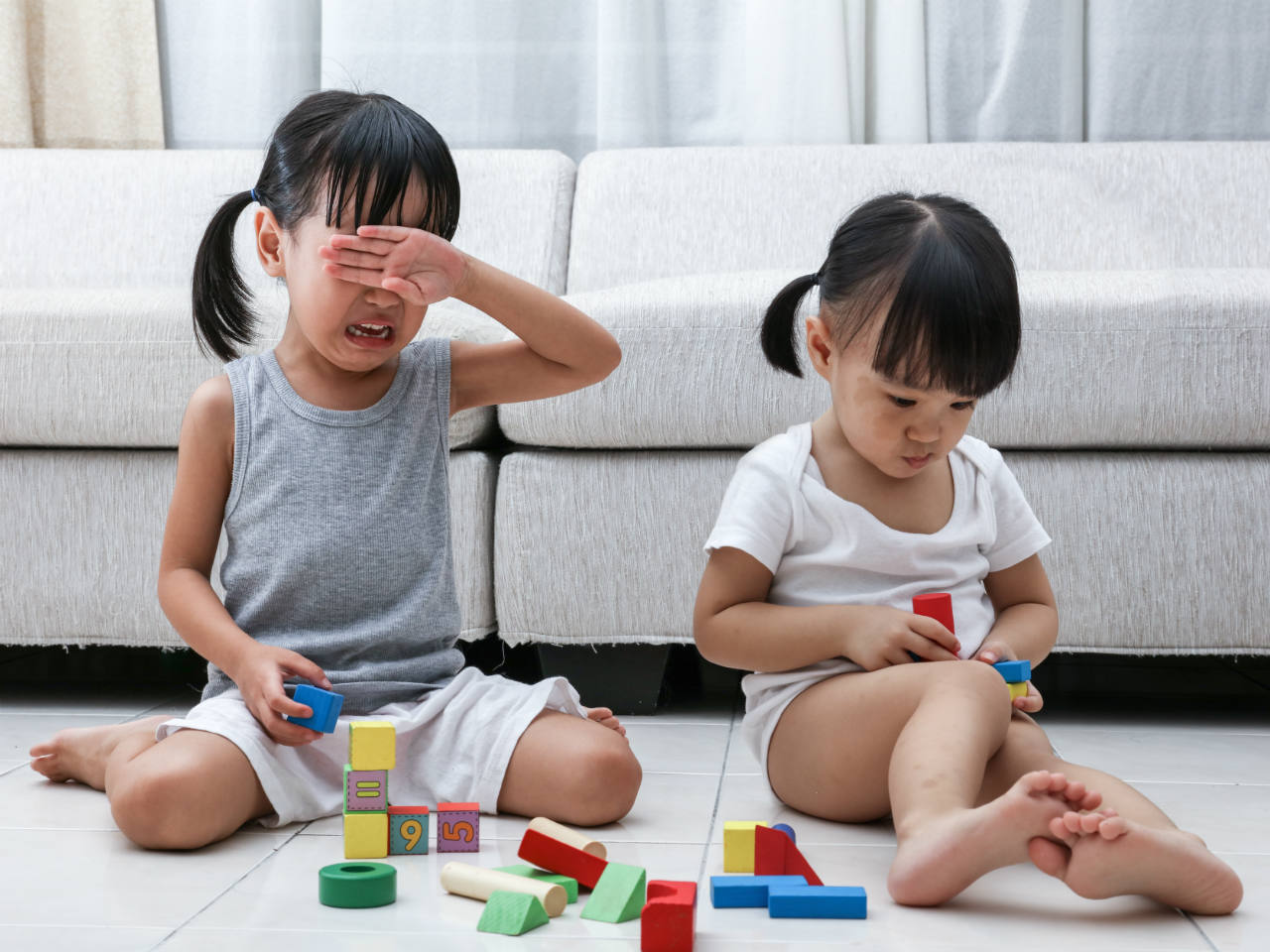Earlier this year, crawling—which was previously considered a milestone reached around 9 months—was removed from the CDC’s main milestone checklists for babies in the United States, to the surprise of many parents and paediatric development experts. Walking was also bumped forward to 18 months (instead of 12 months) and talking is now listed as a 15-month milestone, instead of at the 12-month mark.
“Some of the changes—including removing crawling—inadvertently send the message to parents and caregivers that certain milestones no longer matter, when that just truly isn’t the case,” says paediatric physical therapist Kaitlin Rickerd, who sees kids at her New York State practice and runs the website and popular Instagram account Milestones and Motherhood.
While the checklist changes were ostensibly made to improve early identification of developmental delays and discourage a “wait and see” approach, Rickerd believes the new checklist is going to have the opposite effect. She says there’s an “unintended possibility that these changes could instead result in referral delays, delay evaluations, lengthen the course of treatment, and impact subsequent developmental milestones.”
Here in Canada, doctors and organizations like the Canadian Paediatric Society don’t use the same reference schedules and milestone lists as the U.S. More common in Canada are the CPS’s Caring for Kids site, the Rourke Baby Record (a guide developed by family medicine doctors in Newfoundland), or the Nipissing District Developmental Screen (NDSS), which is common in Ontario, says Toronto-based developmental paediatrician Ripudaman Minhas.
On the CPS’s list of developmental milestones, there’s actually no mention of crawling until the baby is 12-14 months.
By that point, the CPS says most babies can sit up without help, crawl on their hands and knees, or scoot around on their bum.
If crawling isn’t a milestone, does it still matter?
For paediatric physiotherapists like Rickerd, the fear of downplaying crawling on milestone checklists is that parents might lose precious time for bringing their baby in and getting on a list for early intervention services—missing a precious window of time in their infant’s development.
Rickerd adds there are a lot of misconceptions about the importance of crawling. “It’s not so much that lack of crawling is always a “red flag”, but more that crawling is a really important milestone with benefits to so many developmental domains that impact higher level skill development, and that crawling is part of ‘typical development’, so when it isn’t happening, there is a reason.”
“Add in some survivor bias—‘I never crawled and I’m fine!’—plus conflicting information from so many different sources, and general parental worry when it comes to milestones, and you’ve got a recipe for confusion,” she says.
Typically, when do babies crawl?
Crawling is a gross motor skill—these are movements using the body’s large muscles. As your baby grows, these skills may include sitting, standing, walking, running, keeping balance, and changing positions.
Most babies start crawling between the ages of five to 11 months, says Minhas, but there is a big range. “There’s a lot of variability in this particular gross motor milestone,” he says. “Some babies forgo crawling altogether, or engage in a variation on crawling before walking upright.”
With traditional crawling, which is also known as “reciprocal crawling,” your baby will be on both knees and both hands as they move forward, says Minhas. “This requires them to maintain balance while moving the opposite hand and leg forward together.” Other variations include bum-scooting, army/commando crawling, or bear-crawling (where the knees and elbows stay extended, like a crab walk), or even rolling, adds Minhas. “In a clinical context, we don’t worry if the child is preferring to use a variation on crawling.”
What are the benefits of crawling?
Learning to crawl isn’t only about getting around, or progressing toward walking. Crawling helps babies gather and process information about their world, says Salma Kassam
, an occupational therapist who specializes in working with little kids and babies at Holland Bloorview Rehab Hospital in Toronto. “There are many physical, cognitive and sensory benefits of crawling for children.”
These include things like strengthening the rib cage and trunk muscles; building stability of the shoulders; strengthening and lengthening a baby’s finger muscles and palms; and learning to coordinate both their right and left sides as they gain body awareness, learn about perception and practice moving around in a space. Then there are benefits that are a bit more complex, like developing the vestibular system, which has to do with balance and spatial orientation, and postural control, which has to do with how your central nervous system processes information and turns it into motor outputs, such as activating certain muscles. Crawling on different textures can also help with sensory and tactile inputs for babies, says Kassam.
If your baby bum-scoots or army-crawls instead, do they still reap these benefits?
For the most part, yes. If the baby is getting around somehow, they’re getting the input they need, says Minhas. “Rolling or bum scooting would check the box—they still allow a child to move through their environment to explore, play and interact.” One of the primary differences, though, is that when a baby crawls with their palms pressed onto the floor to support their weight, this develops their fine-motor skills as well as their gross-motor skills. It also helps with developing “power and coordination in the hands—along with strength in the shoulder muscles and core,” Minhas says.
When should I worry about my baby not crawling?
Minhas, who sees patients at the Inner City Health Program at St. Michael’s Hospital in Toronto, tells parents not to worry too much if their baby isn’t crawling. “There is no convincing evidence that children who skip crawling are at higher risk of other sorts of developmental difficulties,” he says. As long as your baby has “the motor power, [muscle] tone, coordination, and motivation to move themselves through the environment in some way,” you don’t have to worry.
Paediatricians keep an eye out for low muscle tone, and watch for delays in other gross-motor milestones, like head control and sitting independently. “Most commonly, low muscle tone can appear as a baby who appears to slip through your hands when you hold them from their underarms,” says Minhas. Other signs of “low tone” would be a baby who has difficulty with feeding or who has a weak cry, he adds.
Minhas says that families should definitely speak with their healthcare provider if they find that their baby’s movements are asymmetrical or one-sided. If your baby “seems to lack awareness or motivation to explore their environment or connect socially with others,” mention it at your next visit.
“Don’t worry about a specific timeframe,” notes Kassam. “But if you have a gut instinct, don’t ignore that either.”
Rickerd, who’s a mom of three, tells parents the same thing: “If you are worried, it is always OK to lean into that feeling and advocate for a specialized evaluation.”
Are there ways to help my baby crawl?
Tummy time—which can start right after the baby’s umbilical stump falls off—develops core strength and power, says Minhas. It also supports motor development, starting with head control and progressing to sitting, standing and walking. Find a safe space to work on belly mobility—a firm foam mat is ideal, says Minhas. And don’t hesitate to get down on the floor with your infant.
“Babies are typically motivated by an encouraging caregiver at eye level who smiles and cheers them on as they attempt to crawl for the first time,” he says.
Kassam suggests getting your baby to start reaching for a toy, a light, another parent, a pet, or a sibling—anything that creates “distance, motivation, and opportunity.”
She also wants to make sure parents keep it fun and light—it’s not a race, and there’s no test, so don’t compare your baby to what you see online. “We really don’t want parents to fret about these skills,” she says. “Don’t miss out on the magic that’s happening right in front of you.”
If your kid does need some extra help with these gross motor skills, the earlier the better, says Minhas. That’s because babies’ brains are like sponges, and still malleable. “We know that therapeutic interventions have greater impact at earlier developmental stages of brain development, when neuroplasticity is greatest,” he says. These interventions could be sessions with a paediatric occupational or physical therapist, additional training for parents and caregivers, or going to group therapy sessions together.
What about the online courses or video masterclasses that say they teach babies to crawl?
While there’s nothing wrong with paying for a virtual crawling class from a reputable children’s development expert or physical therapist (Rickerds offers a crawling class on her website), you definitely don’t need one. It’s all about floor time and encouraging interaction.
“The most important thing is play,” says Kassam. “Play is a child’s work. And you can encourage crawling just by playing with your baby on the floor every day.”
It may not always be easy when you’re balancing other responsibilities or caring for kids on your own, but try to find a safe space, and some undistracted time, to take your baby out of their bouncer seat or carrier. Kassam says activity centres and Exersaucers do provide opportunities for interaction and learning, “but containers like these are not the same as being allowed to play on the floor and encouraging that open exploration.”
For pandemic babies especially, online classes may have felt safer, and many parent/baby groups were cancelled during lockdowns. “We’ve been so isolated during COVID, and seeing what other babies are up to has been impossible during the pandemic,” Kassam says. But finding that connection—whether in person or online—is really important. If you don’t have a lot of experience observing typical baby development, it can be helpful to socialize with other families and see the full range of timelines. You’ll see other babies trying out new skills, and you might get a preview of which milestones could be next for your little one.
About our experts:
Kaitlin Rickerd is a paediatric physical therapist who specializes in ages 0 to 3, and the founder of the website Milestones & Motherhood.
Ripudaman Minhas is a Developmental Paediatrician at St Michael’s Hospital and a lecturer in the Department of Pediatrics at the University of Toronto.
Salma Kassam is an occupational therapist at Toronto’s Holland Bloorview Rehab Hospital.

 PARENTING TIPS
PARENTING TIPS PREGNANCY
PREGNANCY BABY CARE
BABY CARE TODDLERS
TODDLERS TEENS
TEENS HEALTH CARE
HEALTH CARE ACTIVITIES & CRAFTS
ACTIVITIES & CRAFTS


